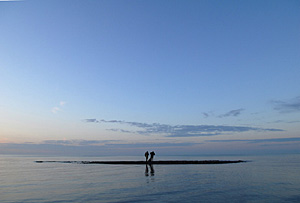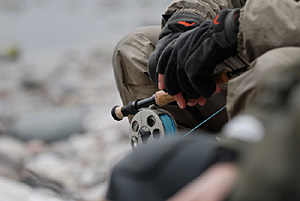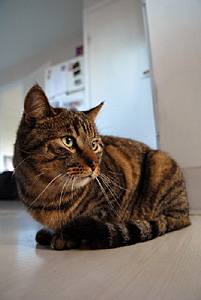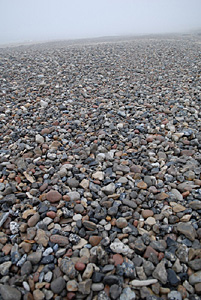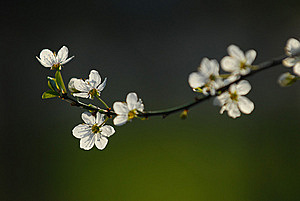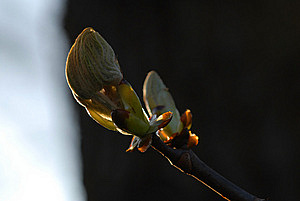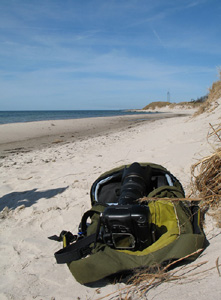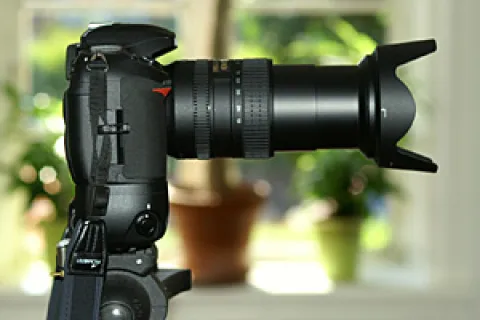Oh, yes! These huge 17-55mm and 70-200mm f2.8 lenses do feel great in the hands, and the do take some awful nice pictures
I manged to acquire a couple of the lenses that I so much desired for my D200. I was lucky enough to land a good deal on the 17-55mm f2.8 DX and the 70-200mm f2.8 VR, and to be honest: I haven't shot with anything else since I got them.
These are class lenses in all respects; from the mechanical over ergonomics to the optics. And they should be, because they are both expensive lenses.
Why did I want them?
I have always been a sucker for good lenses, and I love when I can feel metal, good mechanical work and the sense of superior optical quality in a lens. My love started with my old Minolta MD lenses, which were--as everything was back then--all metal, all brass, all built to last. I continued this trend when I went on to autofocus. I never really got to terms with kit lenses and cheap third party glass, but strove to buy above average and preferably top-of-the-line lenses-- original as well as third party.
I also love hypersonic motors for focusing and inner focus mechanisms with non-rotating front elements. Best of all I love lenses that just don't change physical appearance when you work with them. A lens like the 18-200 VR will pump a lot of air in and out when you zoom it, and inevitably suck dust into its inners. I want lenses without such problems.
But first of I want the image quality that these lenses can offer. It is superior. Color, sharpness, bokeh and all the other aspects that make a good image are present in these lenses in the best way possible. And from what I had seen shot with the 17-55 and the 70-200 in particular, these Nikon lenses were hard to surpass.
Consumer vs. pro
There is often a lot of discussion regarding consumer lenses versus professional lenses, and a lot of photographers argument that you can take equally good pictures with the much smaller and less expensive consumer grade lenses.
While I do believe that this is true to a certain extent, I also believe that there is much more to a lens than what images it can produce.
Basically I do think that most pro lenses can produce technically better images than most consumer or kit lenses, but that some of these less expensive lenses really are "sweet spot lenses" that deliver a lot of quality for the money.
The Nikon 18-70mm kit lens is a good example as is a trusty old 50mm f1.8 and the 85mm f1.8. These lenses are easy to find at very good prices, and can deliver some really excellent images.
But the step from an 18-70mm kit lens to a 17-55mm f2.8 EX lens is one that gives you more than (maybe marginally) better image quailty. The sealing, the mechanics, the better f-value, the hood, the faster AF and many more issues mean that the larger lens will perform better under more difficult circumstances and most likely last longer under stress and in harsh environments.
You might have a diffucult time seeing which picture was taken with which lens, but as I said: there is more to it than meets the eye.
Masculine and feminine gear
Most people who see these two lenses find them way too large for their taste. Well, most people find a D200 with a battery grip too large, and of course there are photographers who will prefer a small and light camera any day. My girlfriend has been shooting with my Minolta 7D lately, and she immediately removed the vertical grip and selected the smallest possible lens for her shoots. I actually think it is a male/female thing. We guys like big, solid and robust. Girls seem to prefer smallish, lightweight and elegant.
I'm a man-man in that respect. I love the testosterone feeling of the D200 with a grip and a massive lens. The weight doesn't bother me, because I know that I now have a picture machine in my hands.
Large, heavy lenses
The 17-55 and the 70-200 are about as large as they get. They cover close to the same range as my 18-200 but weigh in at 5 times what this single lens weighs.
The 18-200 is 560 grams (1.2 lbs.) while the other two are 810 grams (1.7 lbs.) and 1,450 grams (3.2 lbs.) respectively.
When I mount the 17-55 on my D200 I get a 2.1 kilogram or 4.6 lbs. package. Heavy? Yes indeed, but also a very nice feeling of something stable and able to take a beating.
Some day when I climb a high mountain or decide to traverse a desert I might regret this, but right now I don't consider it a problem. The images compensate for the weight.
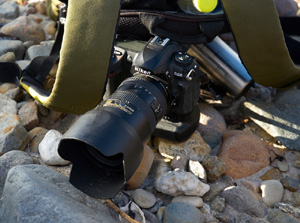
17-55mm f/2.8G ED-IF AF-S DX Zoom-Nikkor
This is a real workhorse lens, and one that will shoot me a lot of images in the coming time. Its zoom range is from moderate wide angle to moderate zoom. With the 1.5 times crop factor of the DX sensor this lens has an image angle almost like a 28-80mm on 35mm film (actually 25.5-82.5). Personally I wouldn't have minded a bit more in the wide end, but a decent 28mm is not a bad lens at all. And this is very decent. I have shot quite a lot with it at 17mm and it does a great job. It has very few disturbances, is as rectlinear as any wide angle, and basically has all the virtues of a good wideangle. It is very sharp full open with a shallow depth-of-field (which I love), but gets top marks if you stop it down to 4 or 5.6.
Mechanically it's a great pleasure to work with, and both the zoom ring and the manual override focus ring are just as they should be regarding friction -- suitably firm and loose at the same time with absolutely no creep.
The hood is a small story in itself. Tulip-shaped, large and with a bayonet that locks it firmly in place when it's attached. It of course reverses over the lens when not in use.
70-200mm f/2.8G ED-IF AF-S VR Zoom-Nikkor
The hood build and function is exactly the same on this pro stable midrange zoom, which is the latest generation in a long heritage of Nikon midrange zooms. The older ones were 80-200mm, but this fully redesigned lens has 10 millimeters extra in the short end.
Apart from that it is also redesigned in many other manners, and has all the traits of a super-modern lens: hypersonic motor for focusing, inner zoom and focus, environmental seals keeping out dust and water and of course image stabilization in the form of Nikon's latest VRII mechanism. It has more buttons than you mother-in-law's compact and has clearly been built with the pro in mind.
Image quality is beyond what you can dream of. The sharpness is sublime, the bokeh as cream and stopped down to somewhere between 5.6 and 8 this lens is a producer.
Personally I prefer the lens full open or almost full open because of the shallow depth-of-field this gives.
Autofocus is fast, silent and precise. You can lock it down temporarily using the buttons on the outer barrel or shut it completely off with a toggle. You can also limit its range so that it won't hunt too close--not that this is a tendency it has... The focus ring overrides that AF any time you touch it, which is a really nice facility.
My relation the the VR-mechanism is the same as with all other image stabilization systems: they might give you some sharpness in a tight spot, but the trees do not grow into the sky. If you want tack sharp images, rely on fast shutter speeds or a tripod.
Updated
March 2011 Yes, I know that this is no longer the newest and brightest star on the 70/80-200mm f/2.8 sky. Nikon has released its successor with a new optical design and VRIII, which is supposed to be even better than this version, especially if you're on full frame.
Well, I'm not, and I feel in very good hands with my version of the lens and have no intentions of upgrading as things are right now.
So to sum up...
What I like about these lenses:
- Superior mechanical quailty
- Great image quality, bokeh in particular
- Constant low aperture
- Shallow depth-of-field (when you want it)
- Fast autofocus
- Manual focus override (and focus locks on the 70-200)
- Sealing
- Nice, big, sturdy hood
